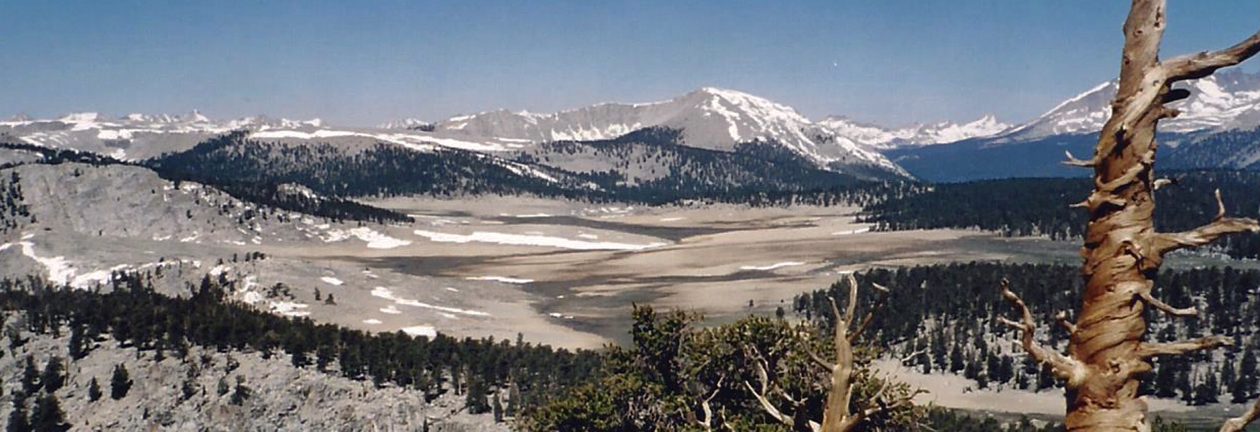Beijing, China
My mission today was to gaze upon Mao Zedong’s lifeless corpse.
“To read too many books is harmful.”
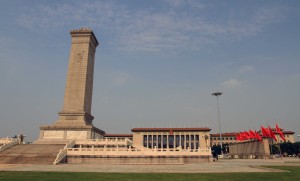
I woke up, showered, brushed my teeth (while doing so there was a woman pissing in the squat toilet in the bathroom while talking on her cellphone – a little odd), and headed to his Mausoleum. I had to turn in my camera at a baggage check point on the east side of Tiananmen Square (no bags or cameras are allowed in the mausoleum) before proceeding onwards.
“Learn from the masses, and then teach them.”
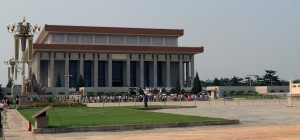
Along the entrance pathway were vendors selling yellow flowers for visitors to leave inside the mausoleum, so that they may pay their proper respects to the deceased dictator. Within the first room, there was a statue of a seated Mao and a rack for the flowers to be placed.
“Communism is not love. Communism is a hammer which we use to crush the enemy.”
Beyond this room, there was another which housed his body. The lines of visitors were kept moving past a glass enclosed room with two military guards in full dress uniform and the body of Mao, lying flat within a glass coffin. There was a light shining on his face that was so intense that it made it glow as if the light were coming from within his skull – like a Mao-ze-lantern. I then proceeded out of the mausoleum and was soon facing Qianmen.
“Political power grows out of the barrel of a gun.”
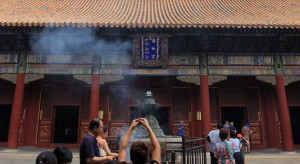
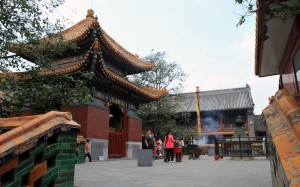
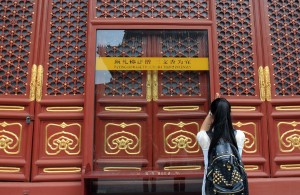
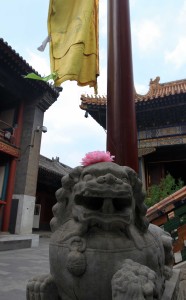
Since I had plenty of time before my train at 14:14, I headed back toward the subway stop near the guesthouse to see the Yonghegong Lama Temple (the irony of visiting supposedly the most important Tibetan Buddhist temple outside of Tibet after having seen Mao Zedong’s preserved dead body within the same day did not escape me). After entering the Lama Temple complex, I was greeted by a familiar face. The Frenchman I did the four-day tour with in Mongolia was just exiting after visiting the temple; he had met up with his sister in Shanghai and had then come back to Beijing to see the rest of the tourist sites. We greeted each other, discussed our immediate plans, and then headed off in our separate directions. I explored the Lama temple, which had many worshipers praying and burning incense. Actually, all visitors get a free bundle of incense sticks to burn; I grabbed mine, burned them, said the Lord’s Prayer since I didn’t know what else to do and I wasn’t about to jump faiths, and then I threw the remainder of my incense bundle in to the fire (I later learned you should burn at most three sticks, not the whole bundle, at once . . . oops). Overall, I enjoyed this temple complex; it was laid out symmetrically with many beautiful temple buildings, each for a different worshipping purpose, and each with many well-crafted Buddhist statues (the main hall, being renovated on the outside, had a giant and impressive Buddha statue that looked like it was made of copper). I then walked through the remainder of the compound and then headed back to the guesthouse.
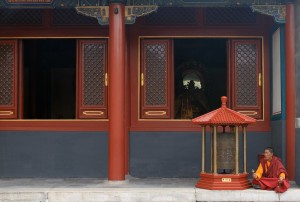
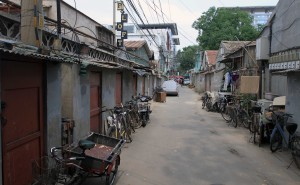
I failed to mention earlier that the guesthouse is located in the Xilou Hutong – a type of ghetto in Beijing. There are many narrow alleyways with doors that open to smaller dwellings, one room bedrooms with no more than a curtain to offer privacy. This is the type of area that you’d expect gremlins to be sold in. Right outside the hostel I was staying at were many small sheds for the local dwellers to lock up their valuables. It was certainly a poor part of this large metropolis, but the people inhabiting the Hutong seemed friendly enough.
I packed my bags, checked out, and by 12:10 I was off to the Beijing Railway Station. I made it there, got directions of what to do through two exchange students, a Somali and a Pakistani, but soon found out I was at the wrong station; I needed to be at Beijing Xi (Beijing West Railway Station). I hopped on to the subway and took several trains to reach my destination. I figured out where to go and was soon on my way to the appropriate waiting room . . . just in time for when they started checking tickets to board. I got through, drenched in sweat (it was a hot day and I was moving fast), and soon was on board the train. I found my bed (a middle bed in car sixteen), dropped my bags, and laid down. I read St. Augustine’s Confessions, trying to relax despite the loud speaker blaring some nonsense in Chinese (a mix of advertisements and possibly a radio program). At about 19:00 I walked to the dining cart, had kung-pao chicken (tasted like the lower-end variety you’d find in the States) and a beer, then went back to my car, and after a while went to sleep – though I woke up plenty of times throughout the night from the abundance of passengers and noise.
